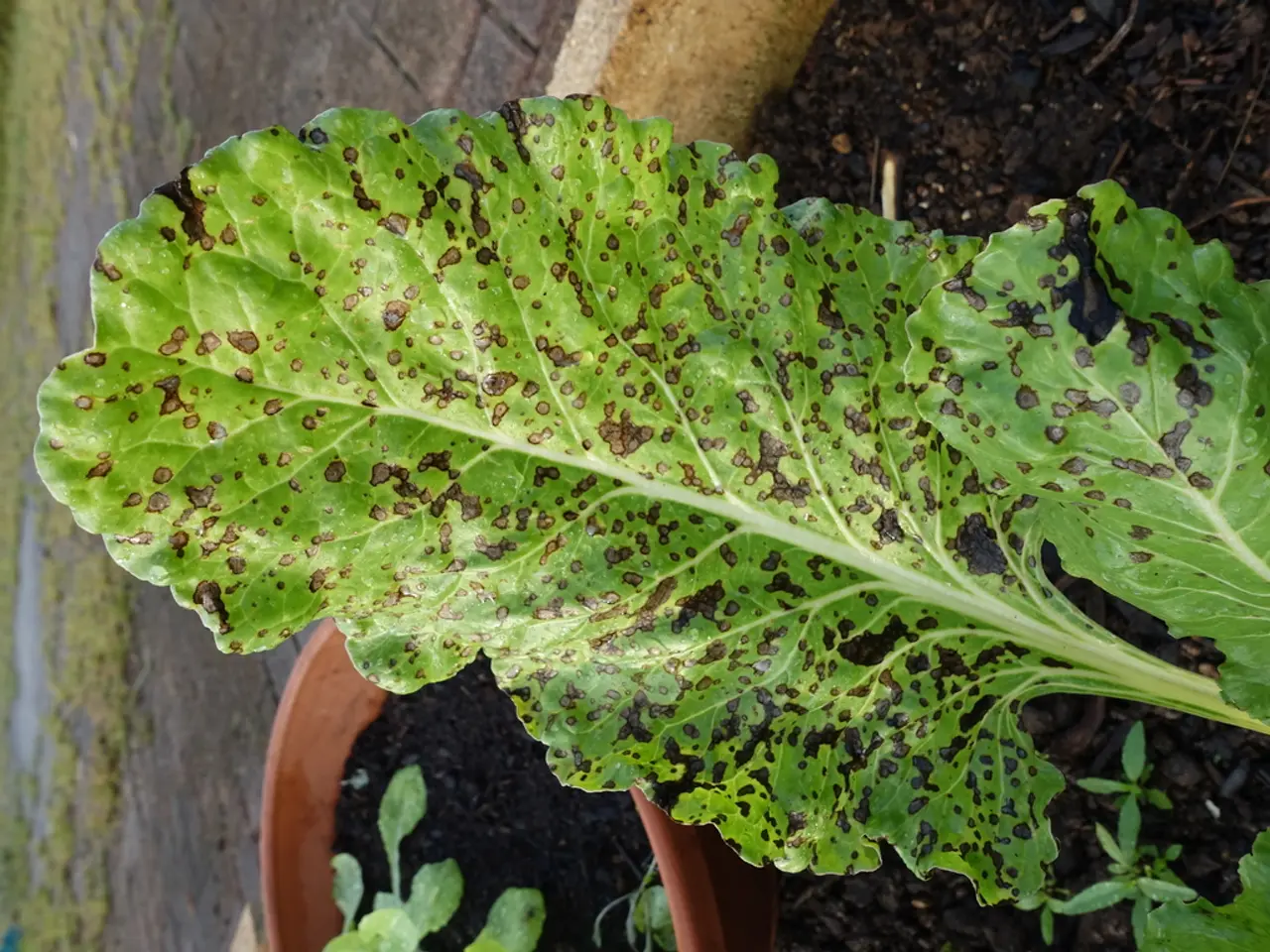Scrotal discolorations: Root causes, remedies, and diagnostic approaches
Black spots on the scrotum can be a cause for concern, but understanding their various causes and treatments can provide reassurance. Here's a guide to help identify and manage these conditions.
**1. Angiokeratoma of Fordyce**
This condition is caused by dilated blood vessels near the skin surface due to loss of elasticity in supporting tissue around capillaries. The spots are usually dark red, purple, or black, and may cluster. They are not contagious or sexually transmitted. Treatment is typically not necessary as the condition is benign. Lesions may be removed for cosmetic reasons or if they bleed frequently.
**2. Pimples or Blackheads on the Scrotum**
Pimples and blackheads are caused by the blockage of pores by oil, sweat, dead skin, dirt, or infection. Heat, friction, and moisture accumulation contribute to this. Treatment involves maintaining good hygiene, keeping the area dry, wearing loose clothing, and using cool compresses. Avoid squeezing or picking to prevent infections.
**3. Other Possible Causes**
Other possible causes for black spots on the scrotum include Fordyce spots (typically white or yellowish bumps, not black), fungal infections, inverse psoriasis, or pigmented lesions. These conditions usually have other distinctive features.
A complete blood count, liver and kidney function tests, STI screenings, erythrocyte sedimentation rate test, biopsy, ultrasound of the lower abdomen and genital area may be used to diagnose black spots on the scrotum.
It's important to note that black spots on the scrotum very rarely indicate cancer or HIV, but a medical professional should rule out any possible link to a severe condition whenever a black skin lesion appears on the body.
If black spots on the scrotum are new, growing, bleeding, painful, or associated with other symptoms, it is important to get a professional evaluation to rule out infections, vascular conditions, or other serious issues.
For those concerned about black spots on the scrotum, it's always best to consult a doctor or nurse for a proper diagnosis and treatment plan. In most cases, black spots on the scrotum are harmless, and any associated discomfort will be mild.
In addition, the Gardasil vaccine can provide immunity against two types of HPV virus that together cause around 90 percent of cases of genital warts in the U.S. Regular screening and safe sexual practices are key to preventing the spread of sexually transmitted infections.
This approach ensures accurate diagnosis and appropriate treatment tailored to the underlying cause.
- Angiokeratoma of Fordyce, a condition marked by dilated blood vessels, can cause dark red, purple, or black spots that may cluster on the scrotum.
- Pimples and blackheads, resulting from blocked pores, can also cause black spots on the scrotum due to heat, friction, or moisture accumulation.
- Fordyce spots, typically white or yellowish bumps, are another possible cause, but they are not black.
- Fungal infections, inverse psoriasis, or pigmented lesions can also result in black spots on the scrotum, each having distinctive features.
- A complete blood count, liver and kidney function tests, STI screenings, erythrocyte sedimentation rate test, biopsy, ultrasound of the lower abdomen and genital area may be used to diagnose black spots on the scrotum.
- Cancer or HIV are rarely linked to black spots on the scrotum, but a medical professional should rule out any possible severe condition.
- If black spots on the scrotum are new, growing, bleeding, painful, or associated with other symptoms, it is crucial to get a professional evaluation to rule out infections, vascular conditions, or other serious issues.
- Consulting a doctor or nurse for a proper diagnosis and treatment plan is always the best course of action concerning black spots on the scrotum.
- In most cases, black spots on the scrotum are harmless, and any associated discomfort will be mild.
- The Gardasil vaccine can provide immunity against HPV, linked to genital warts in around 90 percent of cases in the U.S.
- Regular screening and safe sexual practices are key to preventing the spread of sexually transmitted infections.
- Predictive science and medical advancements play a vital role in understanding and managing various health conditions, including NSCLC, Crohn's, bipolar, Alzheimer's, acne, macular degeneration, and other health-and-wellness issues.
- Mental-health conditions like depression, diabetes, arthritis, HIV, and hepatitis require medical attention and may need specific treatment plans.
- Sexual health is an important aspect of overall health and wellness; conditions like dryness, sexual dysfunctions, and infertility should be addressed with professional guidance.
- Maintaining good skin care and addressing skin-conditions like dryness, acne, and rheumatoid arthritis marked by red, inflamed skin can lead to improved scrotum health and vigilance.
- Men's health encompasses many aspects, from sexual, mental, to skin health; understanding and managing various conditions can lead to overall well-being and improved quality of life.




